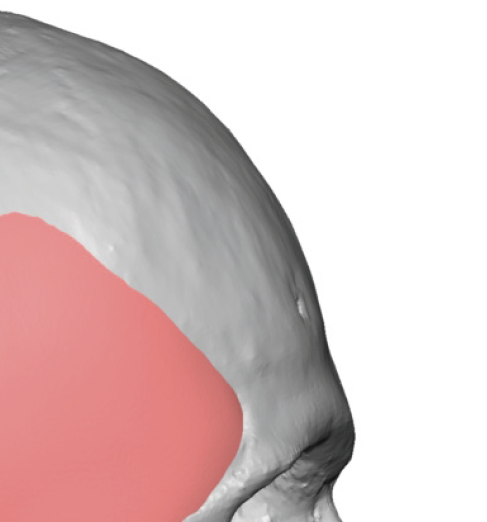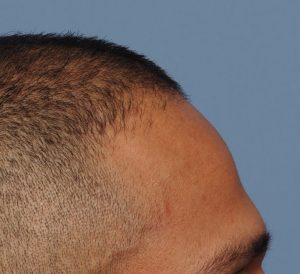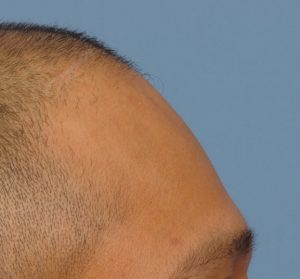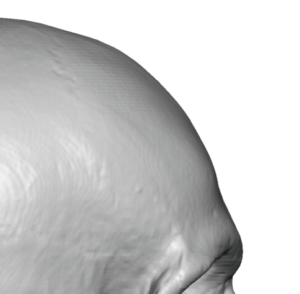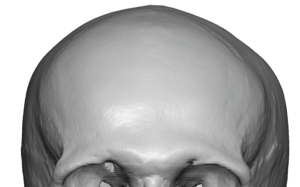Background: Plagiocephaly, or cranioscoliosis, affects the entire shape of the skull in a very predictable way. Depending upon the rotation of the developing head on a vertical axis (clockwise vs counter clockwise) the flat side of the back of the head creates protrusion on the same side on the front of the head. (forehead) Most frequently the protrusion of the forehead is far less severe than the flattening on the back of the head, probably because the source of the plagiocephaly emanates from direct pressure on the back of the head.
In treating a forehead protrusion the question is whether the more prominent side of the forehead should be reduced or the smaller asymmetric side should be augmented. That depends on the degree of protrusion as well as the patient’s perception of their forehead shape. On the back of the head it is almost never a case where the patient wants to reduce the bigger side because the flatter side is so obviously at fault. This, however, is not as obvious on the forehead. Most of the time, in my experience, patients was to reduce the larger forehead side.
Unilateral forehead reduction surgery has some different considerations than overall bony forehead reduction. The incisional access needed can be less in length but needs to be located ‘close’ to the forehead. (hairline or just behind the hairline) Because a burring technique is used the incision must provide for a linear line of access. The handpiece and burr used to do the reduction is largely straight and burring can not be done around ‘corners’ or too far behind the transition point of the more vertical forehead from the horizontally oriented top of the head. In addition the forehead bone is not very thick, usually about a 5mm reduction can be safely done, and contour irregularities are very easy to see on the large non-hair bearing surface of the forehead. So adequate visualization must be obtained to do a smooth and adequate reduction.
Case Study: This short-haired male had a significant plagiocephaly skull deformity for which the flatter right back was being treated with a custom skull implant. He also wanted the protruding forehead concurrently reduced.
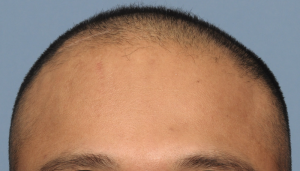

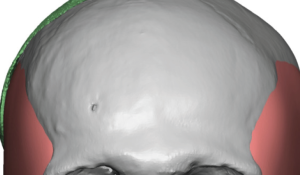
Case Highlights:
1) An ipsilateral forehead protrusion often accompanies the flatter back of the head side in plagiocephaly.
2) The forehead protrusion in plagiocephaly is almost always less severe than the back of the head flattening but may still be aesthetically bothersome in some patients.
3) Unilateral bony forehead reduction can be done through a hairline incision.
Dr. Barry Eppley
Indianapolis, Indiana

